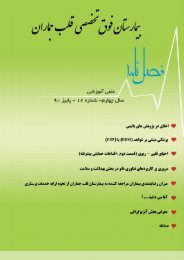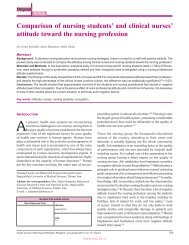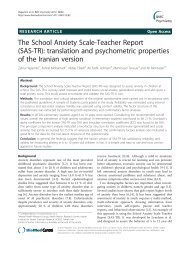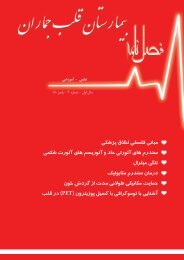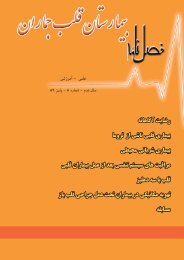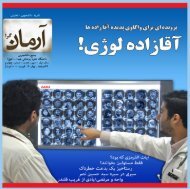Gastrointestinal Nursing.pdf
Gastrointestinal Nursing.pdf
Gastrointestinal Nursing.pdf
You also want an ePaper? Increase the reach of your titles
YUMPU automatically turns print PDFs into web optimized ePapers that Google loves.
26 Chapter 3Anatomical arrangement of the oesophagusThe structure of the oesophagus is made up of three layers: the mucosa,submucosa and the muscularis. Unlike the bulk of the gastrointestinal tract,the oesophagus is not surrounded by serosa.The innermost mucosal layer is composed of stratified squamous epithelium.Beneath the epithelium is the lamina propria, which is composed of connectivetissue. At the upper and lower ends of the oesophagus the mucosa containsmucus-producing glands. A thin band of smooth muscle, the muscularismucosa, separates the lamina propria from the underlying mucosa. The submucosais the middle layer of the oesophagus and contains loose connectivetissue with both elastic and fibrous components, as well as blood vessels andnerve fibres.The arrangement of the muscularis layer in the oesophagus is similar to thatof the rest of the digestive tract in that there is an inner circular layer and anouter longitudinal layer. Between the two muscular layers lies the intermuscularAuerbech’s nerve plexus. However, only the lower two-thirds of theoesophagus is surrounded by smooth muscle. The upper third is surroundedby skeletal muscle.The muscle tissue in the middle of the oesophagus is a transition zone ofboth skeletal and smooth muscles and this area covers as much as 35–45% ofthe length of the oesophagus.At the upper end of the oesophagus is the upper oesophageal sphincter(hypopharyngeal sphincter). It is composed of skeletal cricopharyngeal muscle,which is a thickening of the circular muscular layer. At the lower end ofthe oesophagus, at the junction between the oesophagus and the stomach, isthe lower oesophageal sphincter (gastro-oesophageal sphincter or cardiacsphincter); it comprises the distal 2–3 cm of the oesophagus. The lower oesophagealsphincter controls the passage of ingested food to the stomach.Blood supply to the oesophagusThe oesophagus receives arterial blood via the oesophageal arteries of theaorta, the inferior thyroid artery and the left gastric artery. Blood is returnedto the venous system by way of the left gastric, thyroid and azygous veins.Neural control of the oesophagusThe oesophagus receives both sympathetic and parasympathetic innervation.The swallowing centre in the medulla oblongata initiates peristaltic contractionsvia the vagus (Xth crainial) nerve, which innervates the skeletal muscles in theupper oesophagus. The smooth muscle is innervated indirectly by neurons inthe vagus nerve, which synapse with neurons in the myenteric plexus. The




